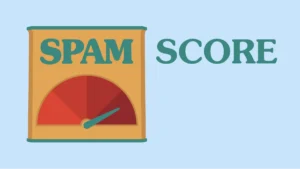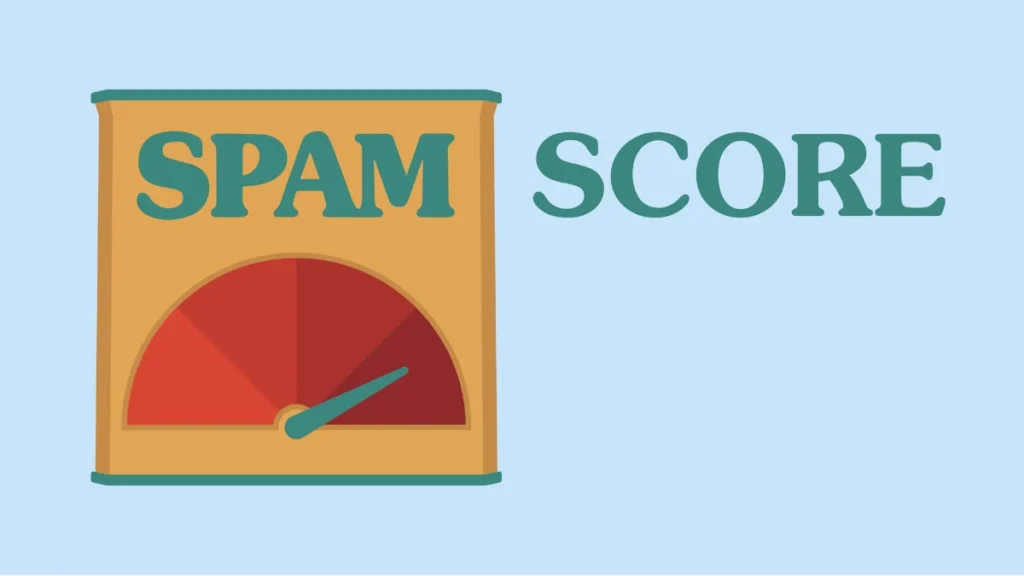In the world of SEO, your website’s credibility is everything. A high spam score can significantly harm your search engine rankings and overall online visibility. That’s why it’s essential to regularly monitor your site’s spam score to ensure that you’re not unknowingly harming your SEO efforts. In this article, we’ll explore what a spam score is, how to check it, the factors that contribute to a high spam score, and how to improve your website’s SEO health by lowering your spam score.
| Feature | Description | Tools |
|---|---|---|
| Email Deliverability | Helps check if emails are likely to land in the spam folder. | Mail-Tester, GlockApps, SpamAssassin |
| SEO Health | Identifies spammy SEO practices that can harm your website ranking. | Moz Spam Score, Ahrefs, SEMrush |
| Spam Score Factors | Assesses factors like sender reputation, content, and backlinks. | Various email and SEO tools |
| Optimization Tips | Provides recommendations to improve deliverability and SEO ranking. | All spam score checker tools |
What is a Spam Score?
A spam score is a metric that indicates the likelihood of a website being penalized by search engines, like Google, due to unethical or manipulative SEO practices. Spam scores are typically determined by analyzing factors like backlinks, content quality, and on-page SEO techniques.

Spam scores generally range from 0 to 100, with higher scores indicating a greater risk of penalties. A high spam score suggests that your website may be involved in questionable SEO tactics that could result in being flagged as spam by search engines. Keeping your spam score low is crucial for maintaining your site’s SEO health and reputation.
How spam score affects SEO
A high spam score can have a serious impact on your website’s search engine rankings. Websites that are considered spammy by search engines tend to be pushed lower in search results, making it harder for potential visitors to find your site. This can result in a drop in organic traffic, decreased visibility, and ultimately a loss of business.
Search engines like Google use spam scores as part of their algorithm to determine whether a site should be penalized. High spam scores are often linked to a variety of negative SEO tactics, such as poor backlink quality, keyword stuffing, and content manipulation. As such, a website with a high spam score is more likely to be demoted or even de-indexed in extreme cases.
How to Check Your Website’s Spam Score
| Tool | Description | Link |
| Moz Spam Score | Provides a dedicated spam score analysis for your website, focusing on backlinks and SEO risks. |
Moz Spam Score
|
| Ahrefs | Analyzes backlink quality to help identify toxic links that may increase your spam score. | Ahrefs |
| SEMrush | Offers a site audit tool to detect SEO issues, including toxic backlinks and potential spam. | SEMrush |
| Google Search Console | Google’s tool to monitor and remove harmful backlinks impacting your site’s spam score. |
Google Search Console
|
The good news is that checking your website’s spam score is easy, and there are several tools available to help you do it. Some popular tools for checking spam scores include:
- Moz: Moz’s Spam Score tool is one of the most well-known resources for analyzing spam risk. It gives you an overall spam score based on multiple factors, including backlinks, content, and more.
- Ahrefs: While Ahrefs doesn’t offer a direct “spam score,” their tools can help you analyze your backlink profile and detect spammy backlinks.
- SEMrush: SEMrush provides a comprehensive audit tool that can help you identify risky backlinks and toxic SEO practices.
- Spam Score Checkers: Various online platforms specifically focus on spam score detection and analysis.
Step-by-Step Process to Check Spam Score:
- Choose a spam score checker tool.
- Enter your website’s URL.
- Review the analysis report that includes your spam score and areas of concern.
- Take action based on the findings (e.g., disavow toxic links, improve content quality).
Common Reasons for a High Spam Score
Several factors can contribute to a high spam score. Understanding these factors can help you identify areas where your website may be at risk. Here are some of the most common reasons for a high spam score:
- Toxic Backlinks: Poor-quality or spammy backlinks are one of the primary causes of a high spam score. These could come from link farms, low-authority websites, or irrelevant sources.
- Keyword Stuffing: Overuse of targeted keywords in content can be perceived as manipulative by search engines, resulting in a higher spam score.
- Thin Content: Websites with little to no original content or that heavily rely on duplicate content may be flagged as spam.
- Spammy user-generated content: forums, comments, or guest posts with spammy links or irrelevant content can also increase your spam score.
How to Reduce and Prevent a High Spam Score
If you’ve discovered that your website has a high spam score, don’t panic. There are several actions you can take to reduce it and improve your SEO:
- Disavow Toxic Backlinks: Use tools like Google Search Console to disavow backlinks from spammy or low-quality websites.
- Focus on Quality Content: Ensure that your content is original, valuable, and relevant to your audience. Avoid duplicate content or content that is too thin.
- Avoid Over-Optimization: Rather than keyword stuffing, focus on creating naturally written content that aligns with user intent.
- Monitor user-generated content: Regularly check comments, forum posts, or guest articles for spam and remove any irrelevant or low-quality submissions.
Best Practices for Maintaining a Low Spam Score
Preventing a high spam score is far easier than dealing with the aftermath of penalties. Here are some best practices for maintaining a low spam score:
- Build a Clean Backlink Profile: Aim for high-quality, relevant backlinks from reputable websites. Avoid buying backlinks or engaging in black-hat link-building tactics.
- Create High-Quality Content: Regularly update your website with well-researched, engaging, and informative content that provides value to your audience.
- Follow SEO Guidelines: Stay up-to-date with Google’s guidelines and make sure your SEO practices are in line with what search engines consider ethical.
- Perform Regular SEO Audits: Regularly check your website for any issues that might contribute to a high spam score. Use SEO tools to perform audits and keep your website in good standing.
Common Reasons for a High Spam Score
Several factors can contribute to a high spam score. Understanding these factors can help you identify areas where your website may be at risk. Here are some of the most common reasons for a high spam score:
- Toxic Backlinks: Poor-quality or spammy backlinks are one of the primary causes of a high spam score. These could come from link farms, low-authority websites, or irrelevant sources.
- Keyword Stuffing: Overuse of targeted keywords in content can be perceived as manipulative by search engines, resulting in a higher spam score.
- Thin Content: Websites with little to no original content or that heavily rely on duplicate content may be flagged as spam.
- Spammy user-generated content: forums, comments, or guest posts with spammy links or irrelevant content can also increase your spam score.
FAQ
1. What is a spam score checker?
A spam score checker is a tool that analyzes your website or email content for factors that could cause it to be flagged as spam by email servers or search engines. It evaluates various elements like subject lines, sender reputation, and content to determine the likelihood of your emails landing in spam folders.
2. How does spam score affect email deliverability?
A high spam score can negatively impact email deliverability by causing your emails to be flagged as spam by email service providers (ESPs). This results in lower open rates, decreased engagement, and potential blacklisting of your domain.
3. How can I check my spam score for email campaigns?
You can use several spam score checker tools specifically designed for email, such as Mail-Tester, SpamAssassin, or GlockApps. These tools analyze your email content, subject line, and sending reputation to give you a spam score.
4. What factors contribute to a high spam score in emails?
Several factors can increase your email’s spam score, including:
- Suspicious subject lines (e.g., excessive use of caps lock or spammy phrases).
- Poor sending reputation (e.g., a history of sending spam).
- Overuse of links to potentially harmful or blacklisted sites.
- Lack of authentication (e.g., missing SPF, DKIM, or DMARC records).
5. How can I reduce my spam score for better email deliverability?
To reduce your spam score, you should:
- Use a reputable email-sending service.
- Regularly clean your email list to remove inactive or invalid addresses.
- Avoid spammy language in subject lines and content.
- Implement email authentication methods (SPF, DKIM, and DMARC).
- Test emails before sending with spam score checkers to identify issues.
6. Are there tools for checking spam scores for both emails and websites?
Yes, some tools like Mail-Tester and GlockApps focus on email deliverability, while others, such as Moz Spam Score, focus on website spam scores. Both types of tools help you maintain a clean online reputation for both email marketing and website SEO.
7. How often should I check my spam score?
You should check your spam score regularly, especially before running large email campaigns, to ensure optimal deliverability. A consistent check helps in identifying and resolving any issues that could hurt your email reputation or website ranking.
8. Can a high spam score affect my website’s SEO?
Yes, a high spam score on your website can lead to search engine penalties, negatively impacting your rankings. Similarly, if your website has a poor reputation due to spammy SEO practices, it can affect email deliverability as well.
9. What is the ideal spam score for emails?
Most email deliverability experts recommend keeping your spam score below 5. A score above 5 indicates higher risks of emails being flagged as spam. The lower your spam score, the more likely your emails will reach the inbox.

